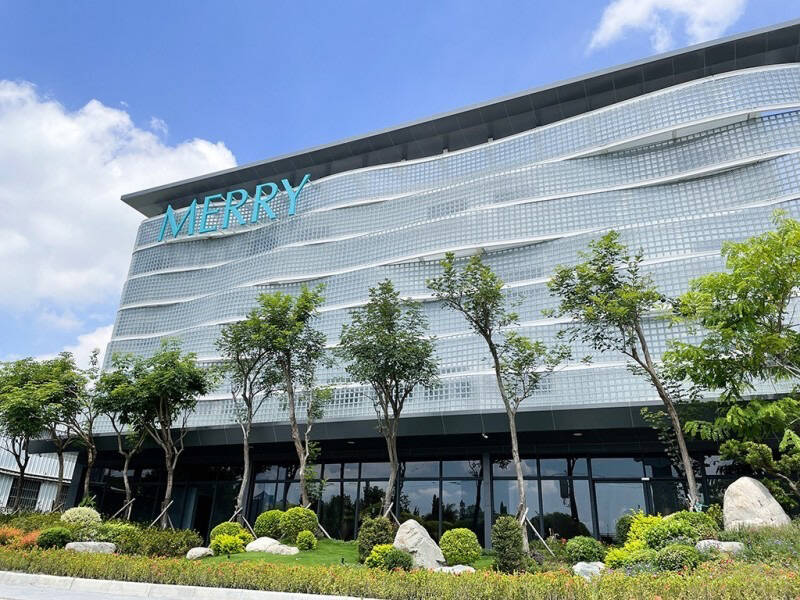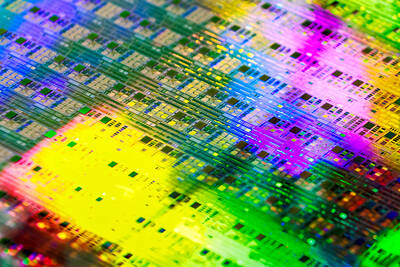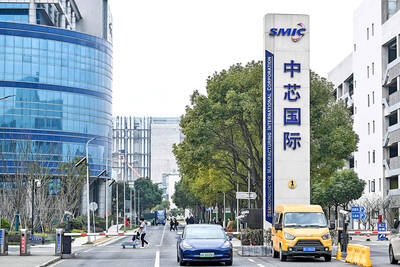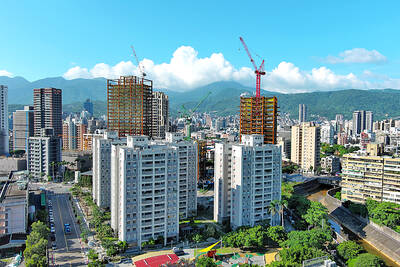Merry Electronics Co (美律), a supplier of headsets and speakers for notebooks and smartphones, yesterday said that third-quarter revenue would improve from the second quarter due to peak season demand and stronger headset shipments. However, year-on-year growth is projected to remain flat due to the sharp appreciation of the New Taiwan dollar.
The Taichung-based company reported second-quarter revenue of NT$10.33 billion (US$349.9 million), a 0.31 percent increase from the same period last year.
The NT dollar’s 7.9 percent year-on-year appreciation against the US dollar erased what could have been 8 percent annual growth in revenue last quarter, as the company’s sales are all denominated in US dollars, Merry president Allen Huang (黃朝豐) said at an online earnings conference.

Photo courtesy of Merry Electronics Co
For every 1 percent appreciation of the NT dollar, the company’s revenue is reduced by 1 percent, and gross margin is cut by 0.3 percentage points, Huang said.
Gross margin dropped to 11.71 percent in the second quarter, down from 13.14 percent a year earlier, due to exchange-rate fluctuations, client-driven price cuts in April, shared tariff costs and rising labor costs in Southeast Asia, he said.
The figure is expected to improve this quarter as the company continues to optimize costs and its product portfolio, he added.
Net profit plunged 99.46 percent year-on-year to NT$2.62 million in the second quarter, compared with NT$491 million a year earlier, while earnings per share also decreased to NT$0.01 from NT$2.24, the company said.
The company reported a foreign exchange loss of NT$472 million, a significant drop from a gain of NT$129 million in the same period last year. Nonoperating losses also widened to NT$197 million in the second quarter, it said.
Operating expenses rose 2.12 percent year-on-year to NT$965 million, driven by an expansion in research-and-development staffing, a shift in production from China to Vietnam and Thailand, and the development of new product lines, including speakers, Huang said.
In the second quarter, headsets — including true wireless stereo (TWS) earphones, gaming headsets and audio headsets — accounted for 70 percent of the company’s total revenue, while speakers contributed 23 percent and other products, such as microphones and hearing aids, made up 7 percent.
The company expects shipments of audio and gaming headsets to rise year-on-year this quarter, although TWS earphone shipments might decline, Huang said.
While overall momentum is expected to improve from the previous quarter, revenue for the segment is likely to remain flat from the previous year due to exchange-rate fluctuations, he said.
Speaker shipments are expected to rise from the previous quarter, but decline year-on-year due to weaker demand for smartphone and earbud speakers, he added.
Microphone shipments are expected to decline both annually and sequentially, as the front-loading effect fades, while hearing aid shipments are expected to continue growing this quarter, driven by new orders from a leading US over-the-counter hearing aid client, Huang said.

NO BREAKTHROUGH? More substantial ‘deliverables,’ such as tariff reductions, would likely be saved for a meeting between Trump and Xi later this year, a trade expert said China launched two probes targeting the US semiconductor sector on Saturday ahead of talks between the two nations in Spain this week on trade, national security and the ownership of social media platform TikTok. China’s Ministry of Commerce announced an anti-dumping investigation into certain analog integrated circuits (ICs) imported from the US. The investigation is to target some commodity interface ICs and gate driver ICs, which are commonly made by US companies such as Texas Instruments Inc and ON Semiconductor Corp. The ministry also announced an anti-discrimination probe into US measures against China’s chip sector. US measures such as export curbs and tariffs

The US on Friday penalized two Chinese firms that acquired US chipmaking equipment for China’s top chipmaker, Semiconductor Manufacturing International Corp (SMIC, 中芯國際), including them among 32 entities that were added to the US Department of Commerce’s restricted trade list, a US government posting showed. Twenty-three of the 32 are in China. GMC Semiconductor Technology (Wuxi) Co (吉姆西半導體科技) and Jicun Semiconductor Technology (Shanghai) Co (吉存半導體科技) were placed on the list, formally known as the Entity List, for acquiring equipment for SMIC Northern Integrated Circuit Manufacturing (Beijing) Corp (中芯北方積體電路) and Semiconductor Manufacturing International (Beijing) Corp (中芯北京), the US Federal Register posting said. The

MORTGAGE WORRIES: About 34% of respondents to a survey said they would approach multiple lenders to pay for a home, while 29.2% said they would ask family for help New housing projects in Taiwan’s six special municipalities, as well as Hsinchu city and county, are projected to total NT$710.65 billion (US$23.61 billion) in the upcoming fall sales season, a record 30 percent decrease from a year earlier, as tighter mortgage rules prompt developers to pull back, property listing platform 591.com (591新建案) said yesterday. The number of projects has also fallen to 312, a more than 20 percent decrease year-on-year, underscoring weakening sentiment and momentum amid lingering policy and financing headwinds. New Taipei City and Taoyuan bucked the downturn in project value, while Taipei, Hsinchu city and county, Taichung, Tainan and Kaohsiung

India’s ban of online money-based games could drive addicts to unregulated apps and offshore platforms that pose new financial and social risks, fantasy-sports gaming experts say. Indian Prime Minister Narendra Modi’s government banned real-money online games late last month, citing financial losses and addiction, leading to a shutdown of many apps offering paid fantasy cricket, rummy and poker games. “Many will move to offshore platforms, because of the addictive nature — they will find alternate means to get that dopamine hit,” said Viren Hemrajani, a Mumbai-based fantasy cricket analyst. “It [also] leads to fraud and scams, because everything is now